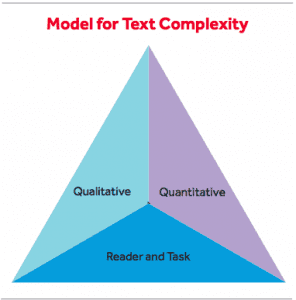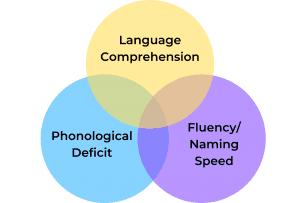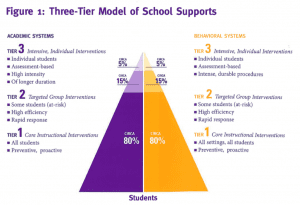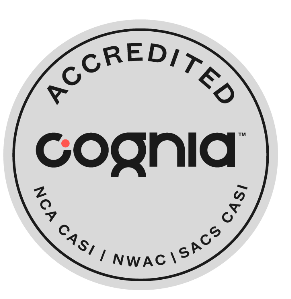CSD Reading Corner - Learning to Read
 Many people think that learning how to read happens naturally like learning to talk. In reality, learning how to read is a complex process that requires explicit instruction in both the foundational skills for decoding and the comprehension skills for understanding and thinking critically a variety of texts.
Many people think that learning how to read happens naturally like learning to talk. In reality, learning how to read is a complex process that requires explicit instruction in both the foundational skills for decoding and the comprehension skills for understanding and thinking critically a variety of texts.
Many people think that learning how to read happens naturally like learning to talk. In reality, learning how to read is a complex process that requires explicit instruction in both the foundational skills for decoding and the comprehension skills for understanding a variety of texts.
The key components of reading and language arts include:
Oral Language | |
Oral Language is |
|
Oral Language is important because it allows |
|
Oral Language can be developed by |
|
Oral Language instruction is most effective when |
|
Phonemic awareness is | • the ability to hear, identify, and manipulate individual sounds, phonemes, in spoken words. |
Phonemic awareness is important because it | • improves children’s word reading and reading comprehension. • helps children learn to spell. |
Phonemic awareness can be developed by | • identifying phonemes (individual letter sound). • categorizing phonemes. • blend phonemes to form words. • segment words into phonemes. • delete or add phonemes to form new words. • substitute phonemes to make new words. |
Phonemic awareness practice is most effective when | • children are taught to manipulate phonemes by using the letters of the alphabet. • instruction focuses on only one or two rather than several types of phoneme manipulation. |
(Armbruster, Lehr, & Osborn, 2006)
Phonics | |
Phonics instruction |
|
Phonics instruction is important because |
|
Phonics instruction is effective when it provides |
|
(Armbruster, Lehr, & Osborn, 2006)
Vocabulary | |
Vocabulary refers to |
|
Vocabulary is important because |
|
Vocabulary can be developed two ways |
|
(Armbruster, Lehr, & Osborn, 2006)
Fluency | |
Fluency |
|
Fluency is important because |
|
Fluency can be developed by |
|
Monitoring progress in fluency |
|
(Armbruster, Lehr, & Osborn, 2006)
 Text Complexity: Readers develop vocabulary and comprehension when reading complex texts. Complex does not always mean difficult or longer. An “easier” text can have features that make the text complex. Ideas, sentence structure, dialect and even the set up of a text can make it complex. This is why text complexity has three distinctive components. Quantitative: the “level” of the text, such as, 3rd grade text, or a Lexile Level 650. Qualitative: the structure and ideas in a text, such as dialect, plot, and theme. Reader and Task: what task will the reader do, such as understanding, present, summarize, model. The more complex a text is, the more vocabulary and comprehension development will happen.
Text Complexity: Readers develop vocabulary and comprehension when reading complex texts. Complex does not always mean difficult or longer. An “easier” text can have features that make the text complex. Ideas, sentence structure, dialect and even the set up of a text can make it complex. This is why text complexity has three distinctive components. Quantitative: the “level” of the text, such as, 3rd grade text, or a Lexile Level 650. Qualitative: the structure and ideas in a text, such as dialect, plot, and theme. Reader and Task: what task will the reader do, such as understanding, present, summarize, model. The more complex a text is, the more vocabulary and comprehension development will happen.
In Canyons School District, students are presented with a wide variety of texts to support vocabulary and comprehension development. When a text is at an easier reading level, the ideas are complex and are supported with discussion and writing tasks. When a text is at a more advanced level, discussion is simpler and tasks are not as complex. This allows students to grow their vocabulary to think critically and discuss topics that are meaningful to them.
To find out more about Text Complexity, click here
Text comprehension is important because | • comprehension is the ultimate goal for reading. |
Text comprehension is | • purposeful. • active. |
Text comprehension can be developed | • by teaching comprehension strategies. |
Text comprehension strategies can be taught through | • explicit instruction. • discussion. |
(Armbruster, Lehr, & Osborn, 2006)
Writing | |
Writing |
|
Writing instruction is important because |
|
Effective writing instruction provides instruction in |
|
(Armbruster, Lehr, & Osborn, 2006)
Effectively teaching reading and language arts to students across grade levels requires knowledge of research-proven practices. Canyons use the most current and reliable research to strengthen reading instruction and to select materials that are most likely to yield results. The resources below provide an overview of the science behind teaching reading.
The graphic below shows some of the subtypes of reading disabilities, they include Phonological Awareness deficiency, Rapid Naming (fluency) deficiency, and Comprehension (Language) deficiency. These deficiencies can overlap making reading supports essential.

Each student’s school has reading resources to support individual student needs, in addition to classroom reading instruction. These resources may include small group instruction using curriculum aligned to specific skills, state and district software licenses specific to each school, and extension activities.

CSD believes in a three-tiered model of reading supports. This model incorporates an increasing intensity of instruction based on student needs. Data is used to determine skill deficits and match deficits to evidence-based instruction. Ongoing data is collected and used to inform instructional changes to make student gains.
- Tier 1: evidence based program with reading delivered to all students. Tier 1 evidence based programming and supports in CSD:
- Enhanced Core Reading Instruction- front load or review
- CSD routine ring
- Tier 2: intensified evidence based program for groups of students needing supplemental reading instruction.
- Tier 3: intensive evidence based instructional interventions to increase student’s rate of progress to close the gap. These interventions are usually longer term and may or may not include special education services.
- Tier 2 and Tier 3 interventions in CSD schools:
- Reading Software can vary by school:

